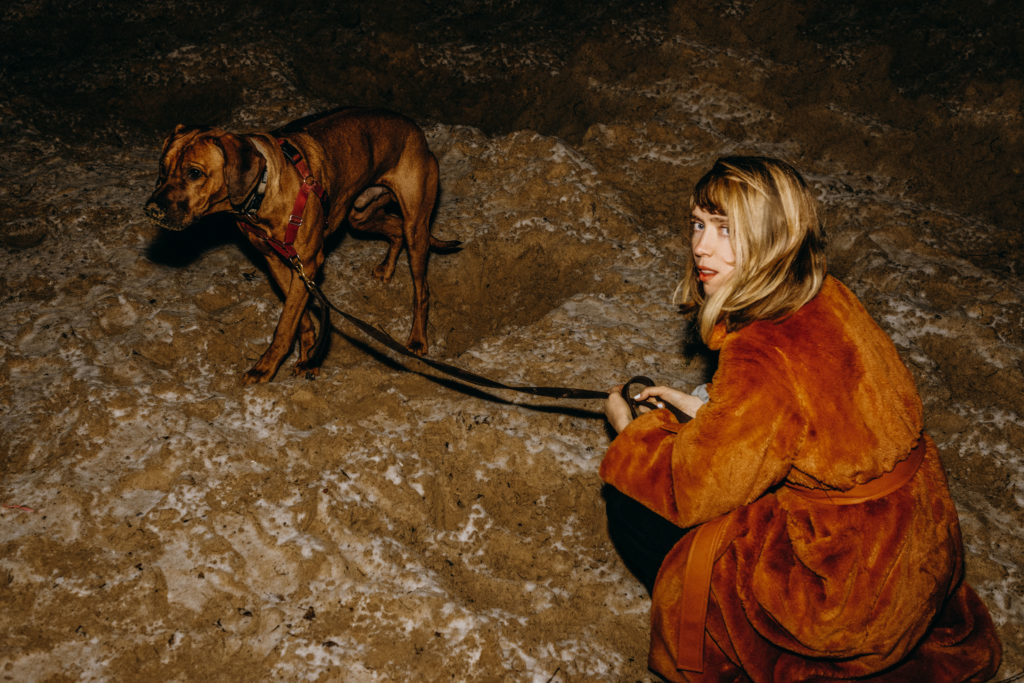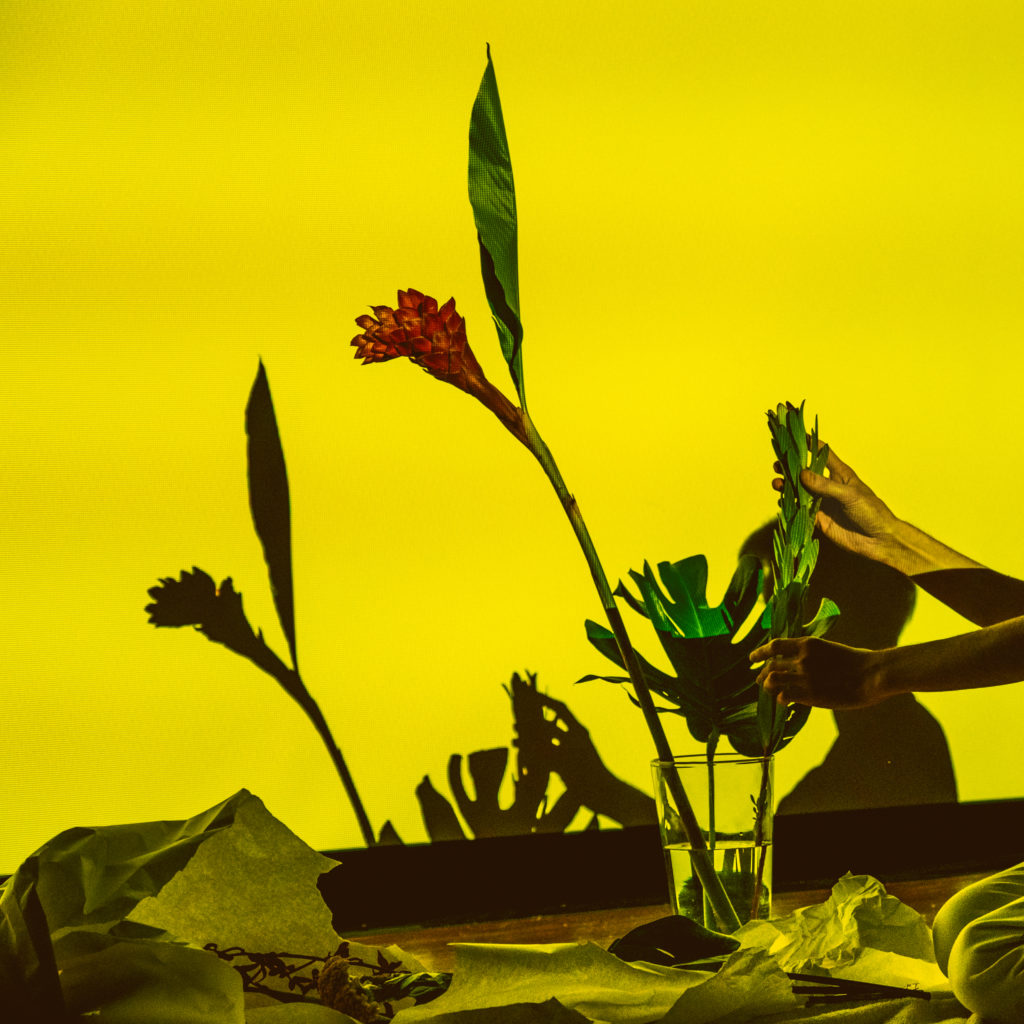Although United is UCC Harlo’s debut album, chances are quite high you already stumbled upon her work—not least because Annie Garlid, the person behind the alias, has been working as an author and translator for zweikommasieben. Apart from her contribution to our humble publication, Garlid is a member of the Holly Herndon Ensemble as well as the band Songs. Furthermore, the musician has performed with an illustrious range of artists—from Caterina Barbieri and Bill Kouligas to Emptyset and Claire Tolan—, worked for CTM Festival in Berlin and more. In addition to this firm stance within the field of experimental music as a singer and beyond, Garlid also has been active in classical music circles as a trained violist. For example, she is an alumnus of the Lucerne Festival Academy and worked with composers both in Europe and the USA. These various collaborations form an intuitive backbone for the debut album as UCC Harlo, as Garlid told us recently:
“If I were to map some of the subconscious channelling, there would be plenty to say: Caterina Barbieri and Emptyset favoured a wordless, sound-oriented singing style in which the voice is held so purely that it becomes kind of a straight-toned instrument. In the piece I did with Bill Kouligas, I sang lines from a Handel opera over his electronic part while Pan Daijing read a poem by Nora Khan in a deadpan style reminiscent of Robert Ashley. The range of textures and influences in that piece stuck with me. The Holly Herndon choir probably inspired an ear for combining wild-sounding vocals (in the style of Sacred Harp singing and Bulgarian singing) with synthetic ones. My friend Nile Koetting, whose installation performance is documented on the cover of the album, developed a performance for me in which the main theme was the oddball rituals surrounding classical music education. I played viola but also acted out a number of these routines. I think that influenced my desire to reframe the practice of classical music with some disregard for the formalities of it.”
Apart form a somewhat unknowing influence of the collaborations, however, the production of United was more of a chance to work and think independent. Garlid mentions a vacuum state of her own ideas, an invisible starting point from where she could get as weird as she wanted.
A similar kind of process as the one happening in switching from collaborations to solo work also happened in Garlid’s use of electronic means of music productions. Unlike her viola and singing skills, acquired in years of her practice, the use of electronic production tools was a starting point for free form experimentations in a sandbox-like situation. Still, the instruments she is classically trained in continue to play a role on United. Accordingly, the songs can be divided up into two groups following inverse approaches: On the one hand there are songs, that grew out of the instrumental or vocal part, in which the electronics fleshed things out rather than initiating them. On the other hand, there are songs, where electronics delivered the first idea and the voice as well as viola chimed in. For these experimentations with electronics and the respective combinations with her already trained skills, Garlid very much took her time and kept working on material for six years (with the occasional long break):
“Making songs was mostly just a hobby, and has mostly taken the form of play in the event that I have time or am in the mood, so I would go for months or even a year without doing anything. Most of the songs were a ‘first thought, best thought’ thing—I’d make them over an hour and then return to this state months later. It wasn’t until I started performing in Berlin and until my residency this past summer in Italy that I amped things up and spent more time transitioning the tracks from rough sketches to more filled-out sketches. A track like ‘The Secret Lives of Plankton,’ however, has remained virtually untouched since 2012, when I made it on a train in Nordrhein-Westfalen. In some ways I feel like the end product of the album is still a labour of love in the form of a glorified sketch. It is just a humble offering thrown out into the world at a time and from a place.”
Garlid is currently based in New York, where she is doing a PHD in musicology. Although her exact subject is still a matter to be narrowed down, her newer studies inform her solo work as well. Also, United “reflects the idea that sound and music always exist in broader, complex contexts loaded with historical and environmental information and mediated by internal emotional landscapes,” as claimed in the press text. Her solo musical practices more and more enables the researcher also to see the link between the creative and the academic, therefore now finding musical creativity in a scholarly practice, too.
“My PhD research and this creative project very much bleed into each other, but mostly by coincidence. For example, I was writing this year about a sociological conception of haunting and its possible manifestations in sound—and at the same time I was making my own form of ‘hauntological’ music. I have been reading stuff in animal studies, environmental science, and environmental humanities. Simultaneously I have been using recordings of bugs in Italy—bugs who are apparently getting louder all the time as the earth gets warmer. The same goes for recordings of water, which is becoming as an element so extreme in its presence or absence as an element that it inevitably enters the consciousness as a character in life. In truth, though, the MIDI-sample combos are due as much to my impulsivity as to a desire to contextualize. I have trouble holding to ‘pure sounds’ without throwing in something rather random to rub up against them. For better or for worse, I get curious about the unstable magnetic fields between odd combinations.”
It’s maybe this consciousness for both an ambivalence in as well as a social context of sound, for both the influence of collaborations as well as the personal ideas, for both trained skilles as well as playful experimentations, that make United such a great listen. We are therefore very happy to be premiering the closing track of Garlid’s debut album. For “Áve Giove,” the musician worked sounds into her messiness of combinations, that somewhat resemble trance arpeggios, rave stabs and claps. Then she “organicize” these sounds and used synthetic voices in tandem with her own voice. Or as she puts it: “It’s the closest I’ve gotten to ‘shredding’ and the process was satisfying.” The result, very much like the whole album, sounds as broad as on point.
UCC Harlo’s United is released on March 22nd 2019 via Subtext and can be pre-ordered, for example, over here.
The album’s opener, “Ceres,” can be listened over here.
All pictures of UCC Harlo by Camille Blake.

